Major Ocean Initiatives
India has an abundance of natural wealth. A megadiverse nation with four of the 35 biodiversity hotspots of the world, the country has excellent environment-related policies in place though it needs stringent implementation and efforts to make genearal populace more concerned.
The ocean is the largest and a most critical ecosystem on Earth. It is one of the most biologically diverse and highly productive systems on the planet, and potentially the largest provider of food, materials, energy, and ecosystem services. It is also a great potential driver of economic growth, jobs, and innovation, and is expected to provide economic opportunities in the future. However, the value of ocean is dimished by environmental pressures from overfishing, climate change, pollution, loss of habitats and biological diversity, and urban development of coasts.
To improve the health and productivity of ocean ecosystems, and reverse the current cycle of decline, many initiatives have been taken by the government. Here is a glimpse of major oean initiatives in making India self-reliant through contributions to GDP.
Blue Economy Policy
The Ministry of Earth Sciences (MoES) recently rolled out the Draft Blue Economy policy for India in the public domain, inviting suggestions and inputs from various stakeholders, including industry, NGOs, academia, and citizens. The draft blue economy policy document outlines the vision and strategy that the Government of India can adopt to utilise the plethora of oceanic resources available in the country. This was disseminated for pubic consultation on several outreach platforms, including websites and social media handles of MoES and its institutes. Stakeholders were invited to submit inputs and ideas by 30th April 2021. The policy document aims to enhance the contribution of the blue economy to India’s GDP, improve the lives of coastal communities, preserve marine biodiversity, and maintain the national security of marine areas and resources.
India’s blue economy is understood as a subset of the national economy comprising an entire ocean resources system and human-made economic infrastructure in marine, maritime, and onshore coastal zones within the country’s legal jurisdiction. It aids the production of goods and services that have clear linkages with economic growth, environmental sustainability, and national security. The blue economy is a vast socio-economic opportunity for coastal nations like India to utilise ocean resources responsibly for societal benefit.
With a coastline of nearly 7.5 thousand kilometres, India has a unique maritime position. Nine of its 29 states are coastal, and the nation’s geography includes 1,382 islands. There are 199 ports, including 12 major ports, that handle approximately 1,400 million tons of cargo each year. Moreover, India’s Exclusive Economic Zone (EEZ) of over 2 million square kilometres has a bounty of living and non-living resources with significant recoverable resources such as crude oil and natural gas. Also, the coastal economy sustains over four million fisherfolk and coastal communities. With these vast maritime interests, the blue economy occupies a position of vital potential in India’s economic growth. It could well be the next multiplier of GDP and well-being, provided sustainability and socio-economic welfare are kept centre-stage. Therefore, India's draft blue economy policy is envisaged as a crucial framework towards unlocking the country’s potential for economic growth and welfare.
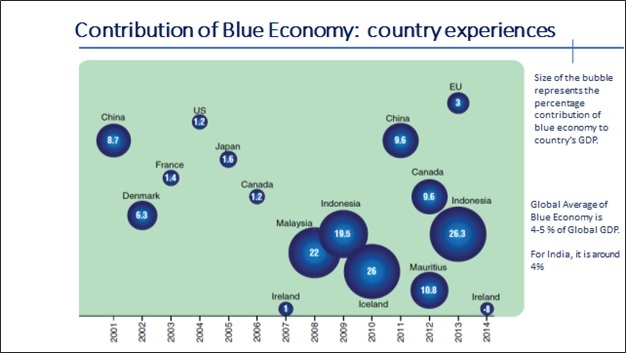
Fig 1: Size of countries Blue Economy to GDP
The draft policy framework emphasises policies across several key sectors to achieve holistic growth of India’s economy. The document recognises the following seven thematic areas:
- National accounting framework for the blue economy and ocean governance
- Coastal marine spatial planning and tourism
- Marine fisheries, aquaculture, and fish processing
- Manufacturing, emerging industries, trade, technology, services, and skill development
- Logistics, infrastructure and shipping, including trans-shipments
- Coastal and deep sea mining and offshore energy
- Security, strategic dimensions, and international engagement
The United Nations member states, including India, adopted 17 Sustainable Development Goals (SDGs), also known as the Global Goals, in 2015 as a universal call to action to end poverty, protect the planet, and ensure that all people enjoy peace and prosperity by 2030. SDG 14 seeks to conserve and sustainably use the oceans, seas and marine resources for sustainable development. Several countries have undertaken initiatives to harness their blue economy. For instance, Australia, Brazil, the United Kingdom, USA, Russia, and Norway have developed dedicated national ocean policies with measurable outcomes and budgetary provisions. Canada and Australia have enacted legislation and established hierarchal institutions at the federal and state levels to ensure progress and monitoring of their blue economy targets. With a draft blue economy policy framework of its own, India is now all set to harness the vast potential of its ocean resources.
Marine Spatial Planning (MSP)
Ensuring sustainable planning and management of the ocean space is of paramount importance. Marine spatial planning is globally a topic of increasing significance in the scientific and policy realms. However, despite acceptance and use, development and implementation of marine spatial planning still face myriad of conceptual and practical challenges, from political to institutional, social, economic, scientific and environmental sources.
India and Norway have signed a Memorandum of Understanding (MoU) establishing the India- Norway Ocean Dialogue in January 2019. In the MoU, the two sides emphasised “the need to move towards integrated and ecosystem-based approaches in the management of renewable and non-renewable natural resources” and identified Integrated Ocean Management as an area of mutual interest for future cooperation. Marine spatial planning is a tool for Integrated Ocean Management for Sustainable Development. It aims to create a framework for the ocean that minimises conflicts between economic sectors and maintains the good environmental status of the ocean through the identification of ocean spaces that are appropriate for different uses and activities. With its considerable experience and technical expertise in this field, Norway would be an ideal partner for India to develop this significant segment of marine space management.
MoES, through National Centre for Coastal Research (NCCR), Chennai, had previously developed Coastal Zone Management (CZM) plans for three areas, namely Chennai, Goa and Gulf of Kutch, which pertained only to the coast and near coastal areas. NCCR would lead the Marine Spatial Planning initiative and will evolve a framework to sustainably use the ocean and its resources to advance economic and social development in the coastal areas of the country. Initially, Puducherry and Lakshadweep have been identified as two distinct sites for developing a framework for marine spatial planning. Puducherry is a developing urban area with specific environmental and economic setting, with industries, fisheries and tourism being essential sectors in the coast. In contrast, Lakshadweep is a pristine, ecologically sensitive area with a lot of potential for tourism and fisheries. The marine spatial planning framework, once developed for these two sites, can be replicated for other coastal states and environments of the country with minor modifications.
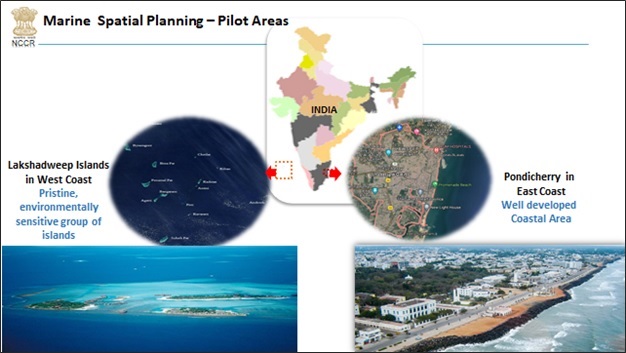
Fig 2: Pilot areas for MSP as agreed between India and Norway as a part of integrated ocean management
Deep Ocean Mission (DOM)
Oceans play a vital role in regulating the climate. For a peninsular country like India, with around 30 per cent of the country's population living in coastal areas, the delicate balance of nature, ecology, environmental perspectives and climate change has resulted in the necessity for better development of the oceans. Only 5 per cent of the deep ocean has been explored so far while the rest remains unexplored. The global security issues involved with oceans dictate exploration of deep sea that needs specialised modern technology. Finance Minister Mrs Nirmala Sitharaman, during her budget speech of FY 2021-22 on 1st February 2021, announced, "To better understand our oceans and its living and non-living resources, we will launch a DOM with a budget outlay of more than Rs 4,000 crore over five years. This Mission will cover deep ocean survey exploration and projects for the conservation of deep sea biodiversity."
The DOM has the following six major themes:
Development of Technologies for Deep Sea Mining, Manned Submersible, and Underwater Robotics: Under the contract with the International Seabed Authority (ISA), India has been allotted 75,000 sq. km area for exploring for Polymetallic Nodules (PMN) in Central Indian Ocean and 10,000 sq. km for Hydrothermal Sulphides (PMS) in Southwest Indian Ocean. The exploration studies of minerals will pave the way for the commercial exploitation of minerals which include manganese, cobalt, nickel and copper in the near future, as and when commercial exploitation code is evolved by ISA. The technologies required for deep sea mining are not commercially available at present. Since there are strategic implications, developing technology in-house for deep ocean exploration assumes importance.
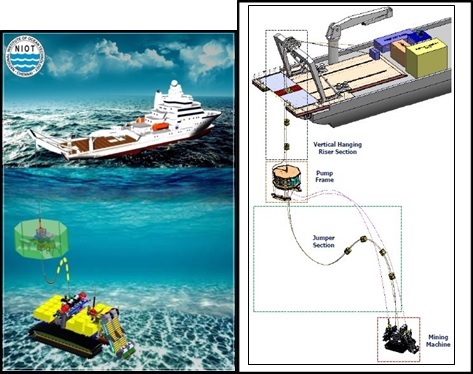
Fig 3: Conceptual diagram of the Integrated Deep Sea Mining System
Development of Ocean Climate Change Advisory Services: The development of ocean climate change advisory service on mission mode will include long-term predictions on increasing intensities of cyclones, storm surges, fishery, stocks, and sea level rise. To monitor the changes occurring in the ocean, the deep ocean observations will be taken up in a more significant way involving autonomous observing systems.
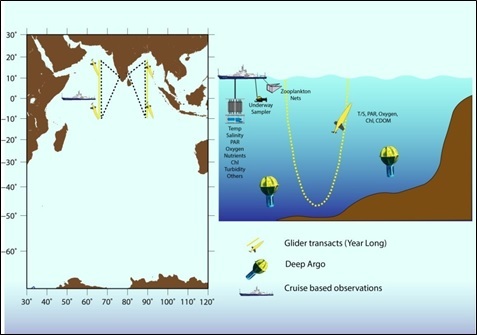
Fig 4: The proposed observation network and the schematic of the open ocean and the coastal ocean mooring systems[i]
Technological innovations for exploration and conservation of deep sea biodiversity: Despite the enormous significance, India’s deep sea environments are meagrely explored and cutting edge technologies for harnessing the deep sea living resources are scarce. Under this initiative, developing an inventory of deep sea fauna and flora of hotspots like sea mounds, capacity building on deep sea taxonomy and genomic studies, development of biodiversity grid, implementation of National Biodiversity Targets, bio-prospecting of deep sea flora and fauna, including microbes, are some of the major areas which are proposed to be focused upon.
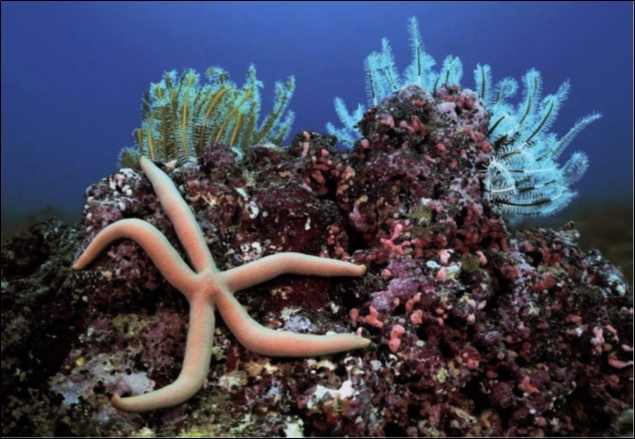
Fig 5: Deep Sea Biodiversity Exploration
Deep Ocean Survey and Exploration of Minerals from Hydrothermal Vents: Exploration of hydrothermal sulphides is a challenging task for various reasons, including its hostile marine environment. Indigenous and collaborative efforts are required to motivate India’s ambitions in advancing science in frontier areas of marine and seabed mineral exploration. To this objective, a new research vessel with special scientific instruments would be an ideal platform for the Indian oceanographic and fishery research fraternity. This research vessel will be built in an Indian shipyard as a part of Atmarnirbhar Bharat initiative of the government.
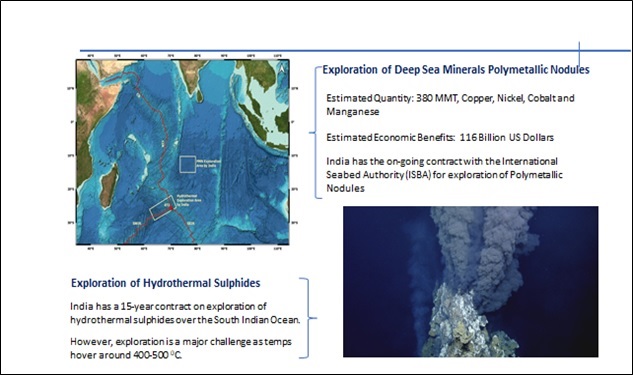
Fig 6: Exploration of Deep Sea Minerals
Energy and freshwater from the Ocean: There is a massive potential for deriving clean and green energy and freshwater from the oceans and the development of offshore technologies for the same. Under this mission, scaled-down field and laboratory studies will be implemented for the design of the offshore components towards setting up an indigenously developed large-scale offshore plant in deep waters for energy and freshwater.

Fig 7: Low Temperature Thermal Desalination ( LTTD) plants in Lakshadweep set up by NIOT at Kavaratti, and Agatti
Advanced Marine Station for Ocean Biology: The Advanced Marine Station is envisaged as a ‘hub and spokes’ model and will help the Mission strengthen its networking with various organisations across research institutes for marine sciences within India and globally. This will allow India to be at the helm of knowledge-driven progress and innovation in ocean biology, which includes bio-prospecting. The translation of applied research into marketable products will be strongly encouraged through interactions with industries and the hosting of incubator facilities for ocean science entrepreneurs.
UN Decade of Ocean Science:
The UN General Assembly has declared the decade of 2021-2030 as the United Nations Decade of Ocean Science for Sustainable Development ('the Ocean Decade'), which aims to stimulate ocean science and knowledge generation to produce new opportunities and create public awareness on the usefulness of ocean for its sustainable use. Ministry of Earth Sciences (MoES) has taken a proactive role by constituting a National Decade Coordination Committee (NDCC) under the chairmanship of Secretary, MoES and involving various national institutions and stakeholders. Its mandate is to coordinate existing activities and develop new programmes at the national level to meet the objectives and goals of the Ocean Decade and also to enhance national access to Decade benefits.
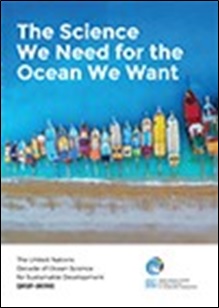
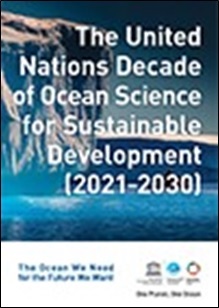
Fig 8: UN publications on the decade of ocean science
During the first meeting of the NDCC held on 3rd February 2021, it was presented that in response to the first "Call for Decade Actions" by the International Oceanographic Commission (IOC-UNESCO), Ministry of Earth Sciences, Government of India, through Indian National Centre for Ocean Information Services (INCOIS), Hyderabad, had submitted its bid for establishing an Indian Ocean Region - Decade Collaborative Centre (IOR-DCC) to coordinate, facilitate and initiate research in the Indian Ocean by exchange of knowledge, ideas and collaborations with other national and international scientific programmes. The outcome of this proposal will be known in due course of time. Additionally, INCOIS, National Centre for Polar and Ocean Research (NCPOR) and NCCR have also been invited as important partners along with other leading international institutions to collaborate in large-scale programme proposals submitted against first "Call for Decade Actions" such as 2nd International Indian Ocean Expedition (IIOE2), Global Ecosystem for Ocean Solutions (GEOS) proposed by a consortium of academic institutions led by University of Maryland, USA and the Biomolecular Ocean Observing Network (BOON).
The National Committee has recommended that INCOIS develop a National Ocean Decade implementation plan document, in consultation with other national institutes and stakeholders, highlighting India's thematic contribution to the ‘Ocean Decade’. It has also recommended that India should continue to contribute to regional programmes and capacity building initiatives in operational oceanography for Indian Ocean Rim countries as part of the Ocean Decade. Further, a major national outreach campaign should be launched as part of the Ocean Decade to create awareness among school and college students as well as the general public on the importance of oceans.
Marine Plastics/litter Prevention and Management
Plastic accumulating in our oceans and on our beaches has become a global crisis. Thousands of tonnes of plastic can be found that make up about 40 per cent of the world's ocean surfaces. Whereas the plastic debris floating on the ocean surface accounts for only 5 per cent of all the plastic trash dumped into the sea, the other 95 per cent is submerged beneath the surface. About 8 million tonnes of plastic enters the sea every year, and global plastics consumption is predicted to grow dramatically, reaching close to 400 million tonnes a year by 2025.
International experts agree that to address the problem of marine plastic waste, there is a need to promote a comprehensive life-cycle approach to effectively prevent and reduce plastic litter discharge in the oceans through environmentally sound waste management practices, ecologically sound clean-up of marine plastic litter and innovative monitoring/observations through the use and application of geo-spatial technologies. Since the problem of plastic pollution is cross-boundary and cross-cutting, it requires systemic solutions covering policy, technology, management, financing, knowledge and research, awareness raising and behavioural change. There is also a need to engage in bilateral and regional cooperation and share best practices through relevant initiatives and programmes.
MoES is leading this research and collaborating with Centre for Environment Fisheries and Aquaculture Sciences (CEFAS), UK and with Japanese institutions in the project “Assessment of Micro Plastic Impact on Marine Organism in Coastal and Estuarine habitats”. It is being carried out by NCCR, Chennai. The programme's main aim is to understand the current distribution and abundance of marine litter and microplastics in the Indian coastal sediment, water and biota. Such information is critical for developing management strategies that can help to reduce plastic waste at the source. The future plan includes modelling the fate of plastics from source to sink and adapt beaches for awareness campaign as part of coastal clean sea programme of UNEP to understand the dynamics of marine litter on beaches.
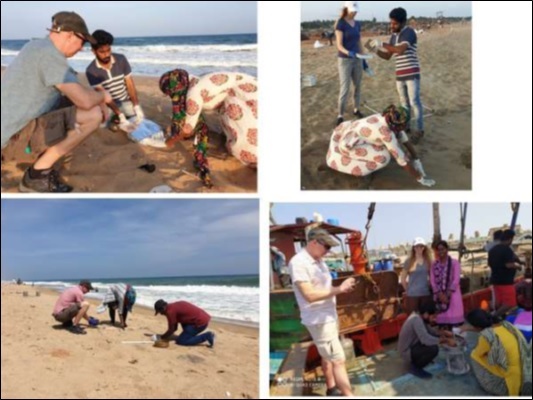
Fig 9: Field sampling and instruments demonstration
It is evident that land-based sources are the major contributor to marine plastics/litter to the marine system. Relevant sources and the environmental fate still remain to be investigated from most regions. This is particularly important for countries like India that is vulnerable to extreme weather events (floods, cyclones) that have become a major source of leakage of plastics in the marine system. Besides the surface waters and oceanic gyres, there is also a need to understand the role of coastal zones, including backshore, as potential sinks for plastics. To reduce further litter/plastics pollution load to the ocean, modelling studies of plastics already present in the marine system also need to focus on the fate of debris originating from the point sources. Such models may allow predicting the probable pathways and endpoints for the plastics, which would help identify the potential location to place the barrier/clean-up systems (e.g. floating trash barrier), which could reduce the further input of plastics into the coastal system. An essential aspect of successful management strategies for plastics is to understand their fate from source to sink. Therefore, interdisciplinary studies will be carried out to link the sources, transport pathways and fate of plastic debris.
At an international level, the G-20 nations have pledged to cooperate and collaborate with relevant Regional Seas Programmes, Regional Fisheries Management Organisations and other regional initiatives to empower governments, communities, and the private sector to advance measures to address the problem of marine plastic waste. It is expected that the topic on marine plastic will be further highlighted during the G20 summit, which Government of India will be hosting in 2022. The Prime Minister of India has announced to tackle the plastic waste issue at its root, phasing out single use plastics by 2022 and popularising the idea of "Swachh Sagar" akin to "Swachch Bharat".
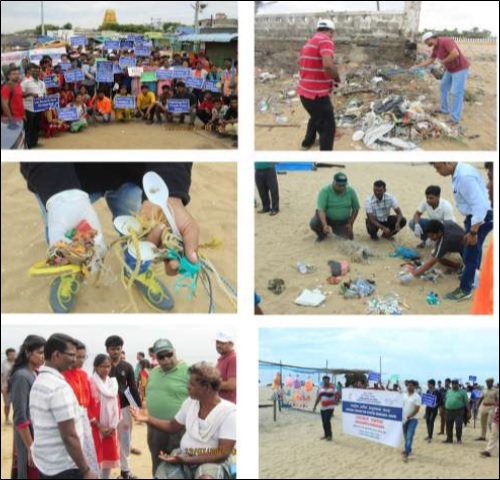
Fig 10: A snapshot of activities during beach clean-up campaign
These initiatives of the Ministry of Earth Sciences are in addition to several ongoing programmes and projects which have substantial socio-economic impacts on the lives of coastal communities. The flagship projects include the advisory services, like Potential Fishing Zones, Ocean State Forecasts, Tsunami and Storm Surge Warnings, Oil Spill trajectory, Rip currents and High Wave alerts; development of eco-friendly technologies for restoration of coastal erosion; using ocean thermal gradients for generating portable drinking water for the island territories; assessment of shoreline changes along the entire Indian coast; monitoring of coastal water quality; and undertaking consultancy works for the state governments and Public Sector Undertakings (PSUs) besides training and capacity building in operational oceanography at its UNESCO recognised Category 2 Centre, (ITCOocean) at Hyderabad. The upcoming ‘ocean initiatives’ would further strengthen India’s position as a vital fulcrum for sustainable development of ocean resources globally.
References:
Working Document on Blue Economy
[1]. Deep Ocean Mission Document
[2]. Deep Ocean Mission Document
[3]. IOC-UNESCO website
[4]. Annual Report NCCR-2020
[5]. Annual Report NCCR-2020
Cdr. P. K. Srivastava
Scientist-F, Ministry of Earth Sciences



